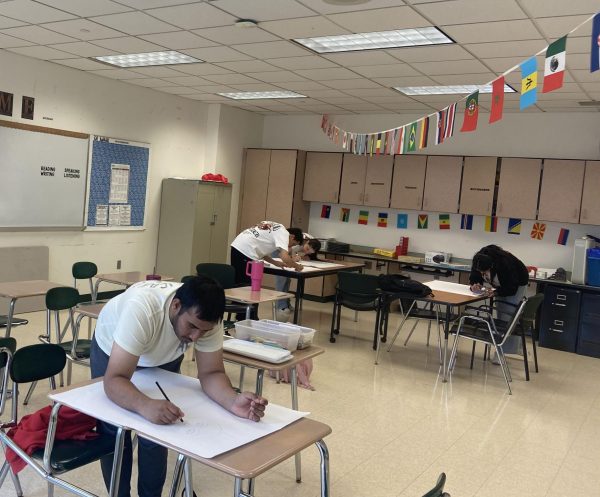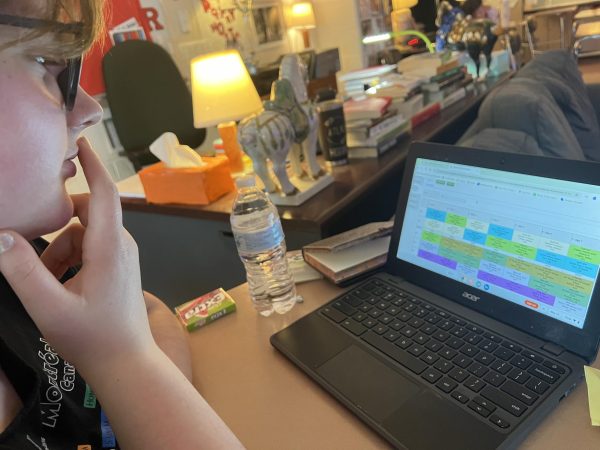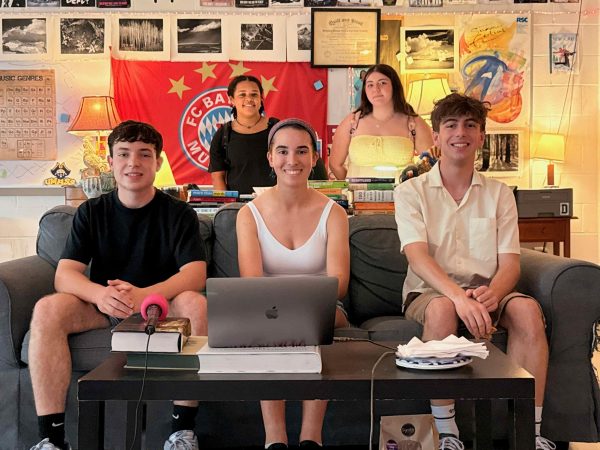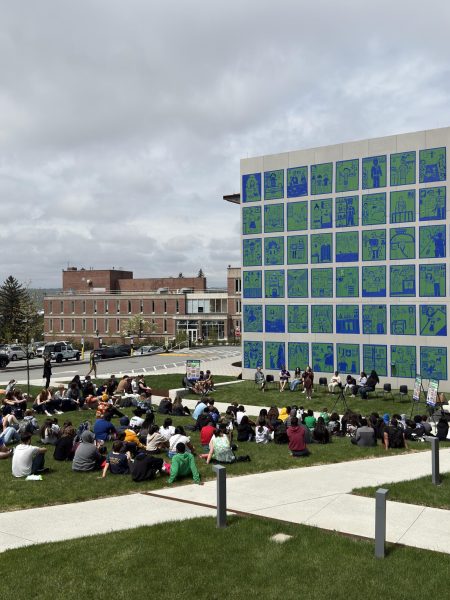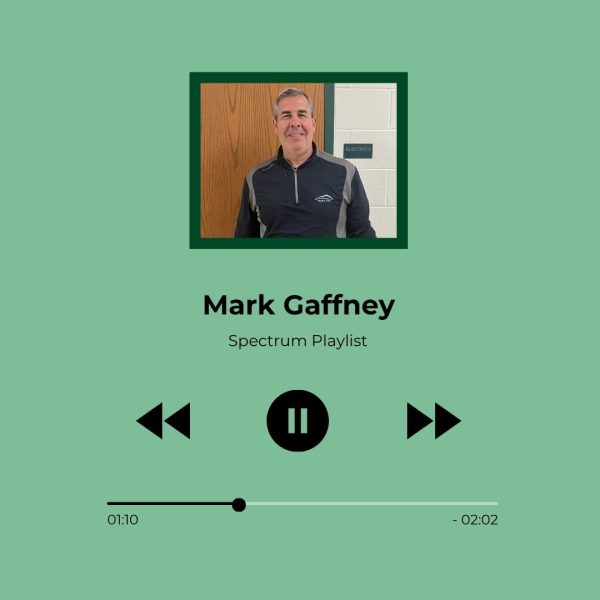The Tribe is utilizing new equipment
Watch the Tribe on YouTube.
The students in TV Media Production, the first class of its kind at Dartmouth High School, start their day off in a whirlwind of lights, cameras, and action.
The class is divided into three teams: Team Backstreet, Team Astro, and Team Alpha. Each team, comprised of 5-6 classmates has one responsibility, which is putting on the school’s informational news program The Tribe. Groups rotate, with one group delivering the daily news every day for one week, while the other two groups work diligently to prepare for their week in the spotlight.
As this week comes to a close, the first rotation is coming to an end, and the cycle will begin again. Senior Tori Santos enjoys the fast-paced environment of the TV Media course. “I kind of like it,” she said, while editing a graphic for next week’s show, “because you actually have a set thing to do when you walk in.”
Last year, DHSTV Media churned out 26 consecutive episodes of The Tribe, making the program a hit among students and teachers alike. However, this wasn’t always the case.
Over the past four years, the DHS media program has changed significantly. Adding live broadcasting to the curriculum allows students to explore another area of the media industry. DHS Media Teacher Robert Perrotti has been trying to integrate aspects of live television into the program ever since he took the position two years ago.
Mr. Perotti mentioned the idea of “21st century schools,” that have the most up-to-date technology, the newest equipment, and a firm broadcast schedule. Mr. Perrotti, with the help of DHS Principal Ross Thibault, wants to make Dartmouth another one of these 21st century schools.
The first step is changing the equipment. “At first, we had nothing,” said Mr. Perrotti, referring to the program’s outdated equipment from prior years.
Over the course of two years, the DHS media program has managed to acquire state-of-the-art cameras, lights, and directing equipment. The most notable is the Ikan teleprompter. Students read off the prompter, which delivers lines via an iPad app, through a two-way mirror directly into the camera. A professional teleprompter eliminates the awkward looking back and forth between the monitor and the camera, and overall makes takes look better.
Getting the money to fund the series of changes in the media program came through as several grants and donations. This summer Mr. Perrotti applied for a Dartmouth Education Foundation (DEF) Grant. On September 5, 2018, the money was approved, and the program was awarded $3,770.29. The certificate hangs proudly on the back wall of the TV studio, yet the equipment being bought with the money hasn’t arrived yet.
Mr. Perrotti excitedly listed off the new equipment that would be arriving soon, “We’re going to have a whole new set-up,” he said. Among the list of equipment was a new studio camera and another teleprompter.
Another source of funds for the media program is the Donors Choose page. Donorschoose.org is a crowdfunding website that allows anonymous donors to fund school-related projects of their choosing. The site has supplied DHSTV Media with four brand-new battery-powered LED lights for their studio.
As the media students get used to the new equipment, there’s also been a major shift in the curriculum. The intriguing concept of the “21st century school” was the impetus for the change.
Two years ago, former principal John Gould brought up the idea of broadcasting a student-run show. That idea has shifted and taken the form of a daily announcement program, as well as a longer show on Friday. The Friday program is where students get to create their own segments. Favorites include “The Sista Alyssa Show” and of course, the “And Fruit” phenomenon.
For the first time ever, students that aspire to be in the media industry can take TV Media Production, a brand new course offered here at Dartmouth. This half-semester class is where students get to strut their stuff and lend a hand in creating The Tribe. The class divides into teams, which rotate and take turns broadcasting. Then, the team splits into a consistent dynamic with several jobs. There’s a producer, a floor director, a writer, a weather person, and two hosts. In the first period class, students are constantly trading jobs with one another.
Everyone gets to experience The Tribe in a new way every cycle. An anonymous student in TV Media Production said, “It gives us experience in a lot of different areas in media, such as editing, filming, directing. Basically, all the -ings.”
With an array of new equipment, a new curriculum, and a dedicated group of students, this year’s season of The Tribe is expected to be excellent.
Senior Justin DeBortoli is looking forward to the professionalism of the program, and the convenience harbored by the new equipment. “It’s a lot easier to get the stuff you want to get done,” he said.
The aspect of live broadcasting is sure to shake things up in the media program. Students in TV Media, like Santos, are ready for the challenge. “I’ve already stuttered through introducing the principal,” said Santos. “I can’t do worse.”
If you want to get involved with DHSTV Media, consider joining the media club, which meets after school on Thursdays in A37, or consider donating to the Donors Choose page.



